Sohrab Hura: The Historian, the Storyteller and the Idiot Photographer

Installation View of Spill at Experimenter—Ballygunge Place. (Kolkata, 2021. Image courtesy of the artist and Experimenter Gallery.)
Photographer Sohrab Hura’s latest exhibition Spill, recently concluded at the Experimenter Gallery in Kolkata, was aptly titled. The expansive exhibition was concerned with excavating Hura’s fifteen years of practice. A complex body of work, it unfolded as a fluid interplay of still and moving image, new and found footage, movement, sound and text that intersected and overlapped—spilling, as it were, into each other. Hura’s process is described as a system of “synaptic connections,” in which each work is linked to the other, creating a web of ideas that probe the very essence of image-making. The result was a chaotic and surreal experience that deliberately disoriented viewers, pushing them to the edge of what they know, forcing them to contend with incoherence and confront their role in the world they occupy. His images are at once fact and fiction, familiar and alien, intimate and strange. They destabilise the relationship between the image, its maker and those who consume it, urging us to reflect on and engage with known narratives anew.
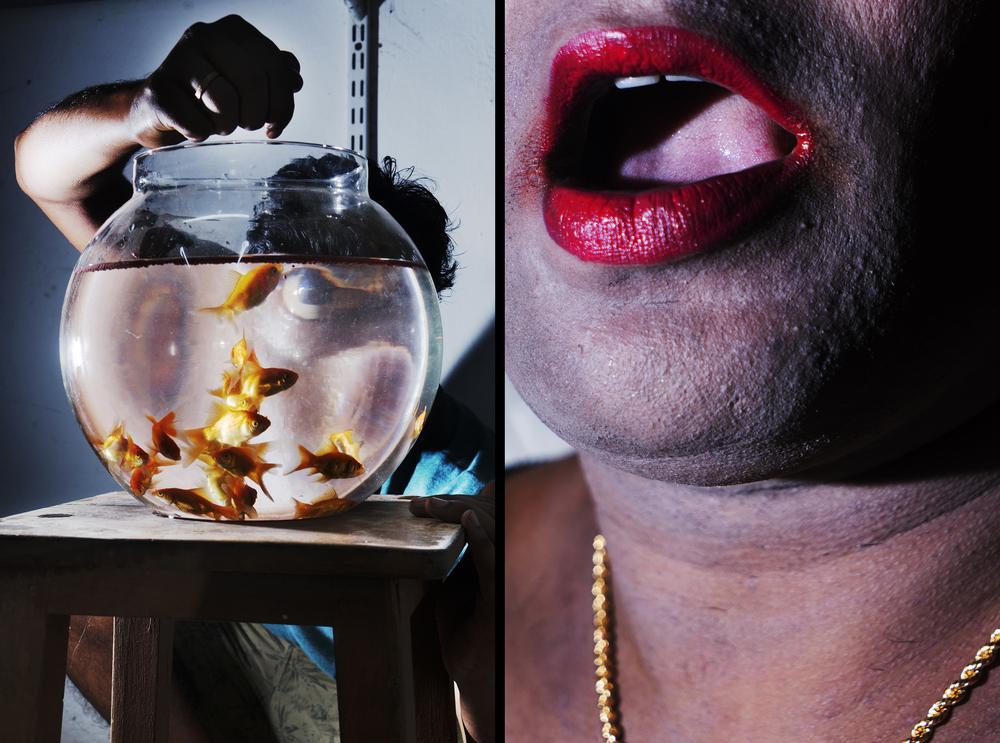
“The Lost Head & the Bird.” (2016–19. Single-Channel Video with Sound in Variable Loop. Ten Minutes Thirteen Seconds. Image courtesy of the artist and Experimenter Gallery.)
Spill followed an irregular curatorial pattern, jumping forward and backward through Hura’s years of work. It opened with the explosive, disorienting and absurd worlds of “The Lost Head & the Bird” (2016–19) and “The Coast” (2013–20). The two series are made of constructed images created during Hura’s travels along Indian coastlines; brutal found footage; viral WhatsApp videos and newspaper clippings of incidents of violence—rape, lynchings, riots, carnage—that reflect the pervasive politics of caste, gender and religion in contemporary India today. Indicative of the growing number of such incidents under the hyper-nationalist and divisive politics of the ruling party, the interplay of these images blurs the boundaries between documentary and fiction. Hura compels us to confront our dangerous position as voyeurs in an increasingly undemocratic India, a nation where fake news is the norm and justice is compromised, a “…post-truth world where actions are fuelled by appeals to emotion and facts are increasingly ignored.”

“The Coast.” (2013–19. Archival Pigment Prints. [left] 24 x 16 inches, [right] 61 x 40.6 centimetres. Images courtesy of the artist and Experimenter Gallery.)
This unnerving entry to Hura’s practice gave way to his quieter and more personal preoccupations: “A Proposition for Departure” (2017), drafts of Hura’s experiments with sound and image; “Midnight Studies and a Self Portrait” (2008), a small series of fifteen images made as a breather when he was making his epic “Life is Elsewhere”; “Land of a Thousand Struggles” (2005–06), a photo-textual documentation of his journey across rural India campaigning for the Mahatma Gandhi National Rural Employment Guarantee Act (MNREGA); and “Pati” (2010/2020), a film about his multiple visits to the village of Pati in Madhya Pradesh.
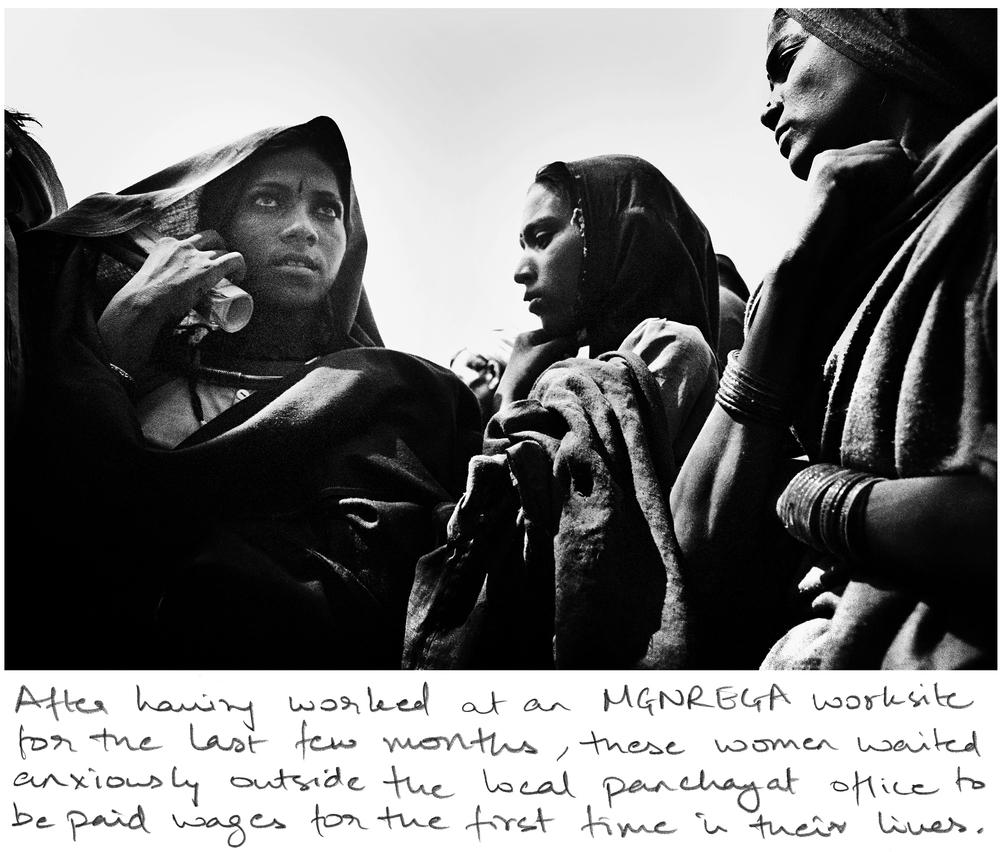
“Land of a Thousand Struggles.” (2005–06. Matt Photograph Paper with Text, Photographs of Variable Dimensions, Archival Tape. Image courtesy of the artist and Experimenter Gallery.)
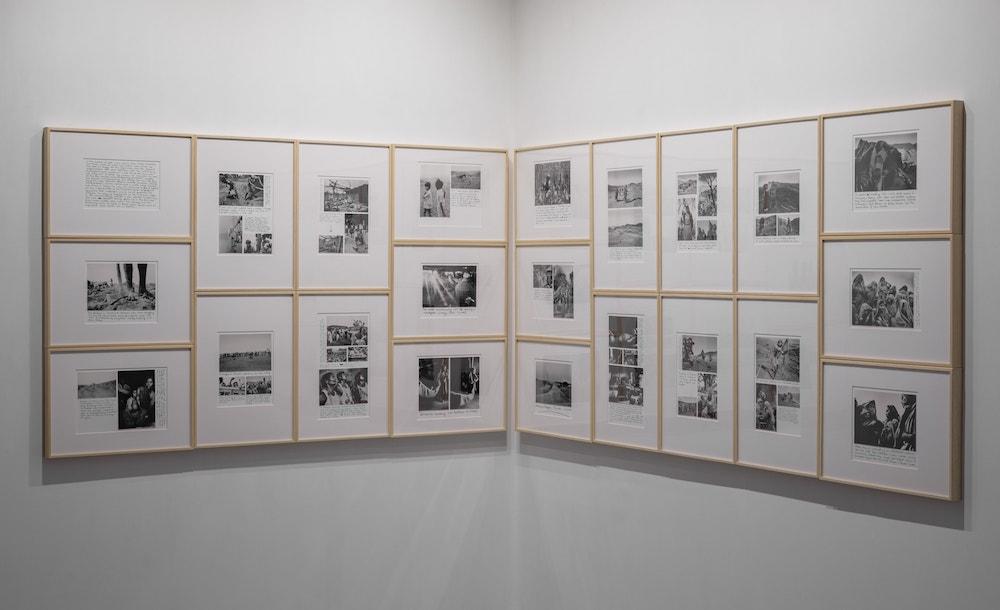
Installation View of Spill at Experimenter—Ballygunge Place. (Kolkata, 2021. Image courtesy of the artist and Experimenter Gallery.)
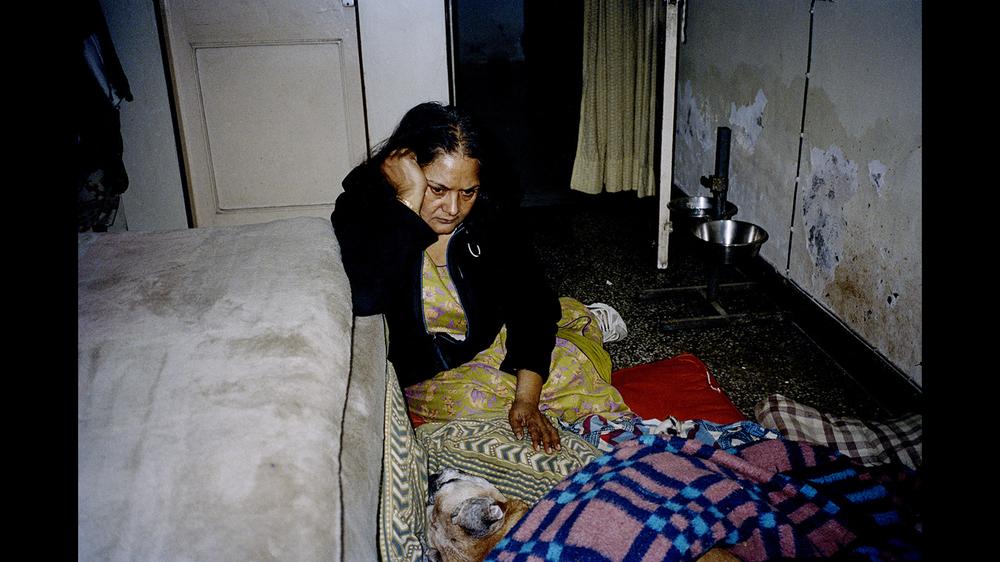
“Bittersweet.” (2019. Single-Channel Video, Two-Channel Audio. Thirteen Minutes Forty-Eight Seconds. Image courtesy of the artist and Experimenter Gallery.)
Arguably, the emotional centre of the exhibition—and, perhaps, of Hura’s work itself—is “Bittersweet” (2019). A poignant moving-image project about Hura’s mother—who was diagnosed with acute schizophrenia when he was seventeen-years-old—and her relationship with her dog Elsa, who passed away in 2014. Narrated by Hura himself, the video operates like a slideshow of a personal family album. Images of his parents, of Elsa, the claustrophobia of their decaying home, his mother’s illness, his father’s departure, Elsa’s death, etc., all flash before one’s eyes. It is an uncomfortable experience, being a voyeur to Hura’s life, but one cannot help but surrender to Hura’s intense vulnerability, experiencing with him the moments of joy, love, anger, embarrassment, grief and despair that have made him who he is.
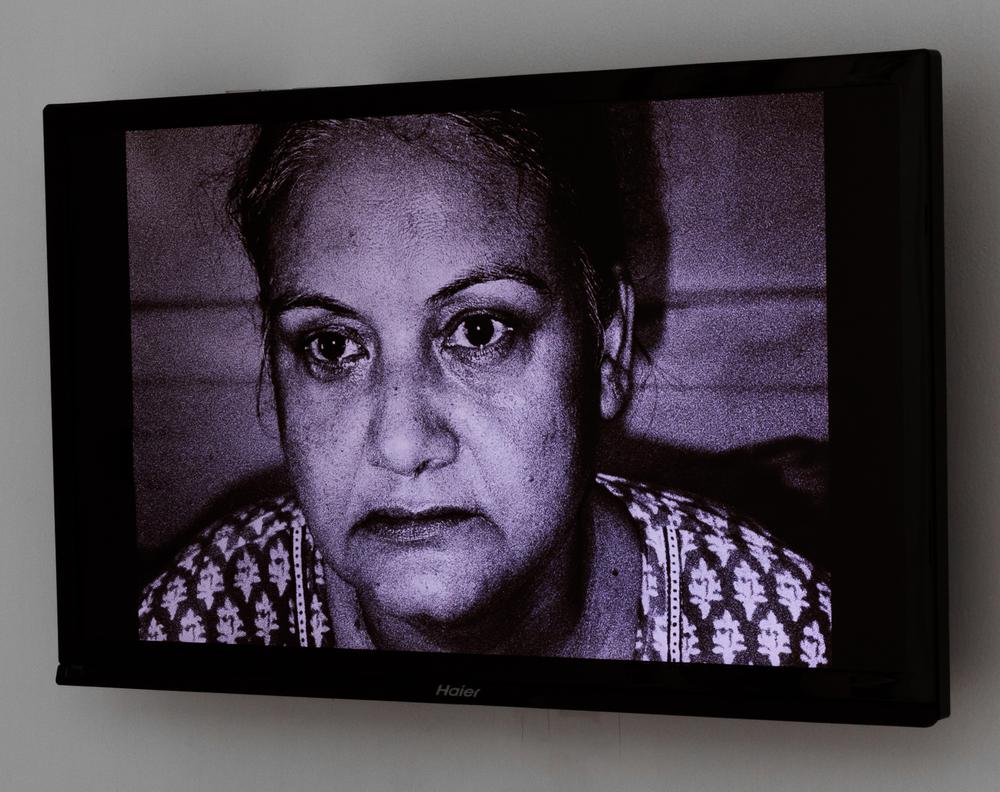
Installation View of Spill at Experimenter—Ballygunge Place. (Kolkata, 2021. Image courtesy of the artist and Experimenter Gallery.)
For Hura, moving away from the formal diktats of image-making is important. He once said in an interview: “(Lens-based) work has more credibility when you admit to the complexity of the way it’s made: it never just fits one vocabulary.” Encountering an exhibition like Spill, then, was a liberating experience. It allowed us to navigate his multiple vocabularies with intimacy and abandon, inscribing ourselves in his stories for times to come.
*The idiot photographer is an auto-fictional character in Hura’s self-written absurd short story that is the prelude to his work “The Coast” (2013–20). Read the story here.
All works by Sohrab Hura.




